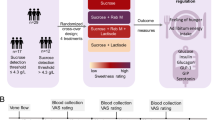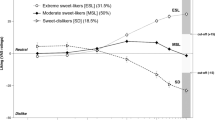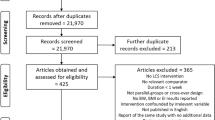Abstract
Energy density of foods, as opposed to their sugar or fat content, is said to be a key determinant of energy intakes. Recent laboratory studies have shown that, under ad lib conditions, subjects consume a constant weight or volume of food, so that their energy intakes depend on the energy density of the diet. Because low energy-density foods provide fewer calories per eating bout, they should—in theory—lead to reduced energy intakes and therefore weight loss. However, there is some question whether energy-dilute foods are as palatable as the more energy-dense foods. Generally high energy density equals high palatability and vice versa. Intense sweeteners represent an exception to the rule, since they maintain sweetness while reducing energy density. While many studies have explored the effects of intense sweeteners on short-term regulation of food intake, fewer studies have addressed the effectiveness of intense sweeteners in reducing energy density for weight control. Issues of energy density, palatability, and satiety, as applied to intense sweeteners are the topic of this review.
This is a preview of subscription content, access via your institution
Access options
Subscribe to this journal
Receive 12 print issues and online access
$259.00 per year
only $21.58 per issue
Buy this article
- Purchase on Springer Link
- Instant access to full article PDF
Prices may be subject to local taxes which are calculated during checkout
Similar content being viewed by others
Author information
Authors and Affiliations
Rights and permissions
About this article
Cite this article
Drewnowski, A. Intense sweeteners and energy density of foods: implications for weight control. Eur J Clin Nutr 53, 757–763 (1999). https://doi.org/10.1038/sj.ejcn.1600879
Received:
Revised:
Accepted:
Published:
Issue Date:
DOI: https://doi.org/10.1038/sj.ejcn.1600879
Keywords
This article is cited by
-
Does low-energy sweetener consumption affect energy intake and body weight? A systematic review, including meta-analyses, of the evidence from human and animal studies
International Journal of Obesity (2016)
-
Aspartame downregulates 3T3-L1 differentiation
In Vitro Cellular & Developmental Biology - Animal (2014)
-
Use of artificial sweeteners and fat-modified foods in weight loss maintainers and always-normal weight individuals
International Journal of Obesity (2009)
-
Intense sweeteners, energy intake and the control of body weight
European Journal of Clinical Nutrition (2007)
-
Replacing Sweetened Caloric Beverages with Drinking Water Is Associated with Lower Energy Intake
Obesity (2007)



